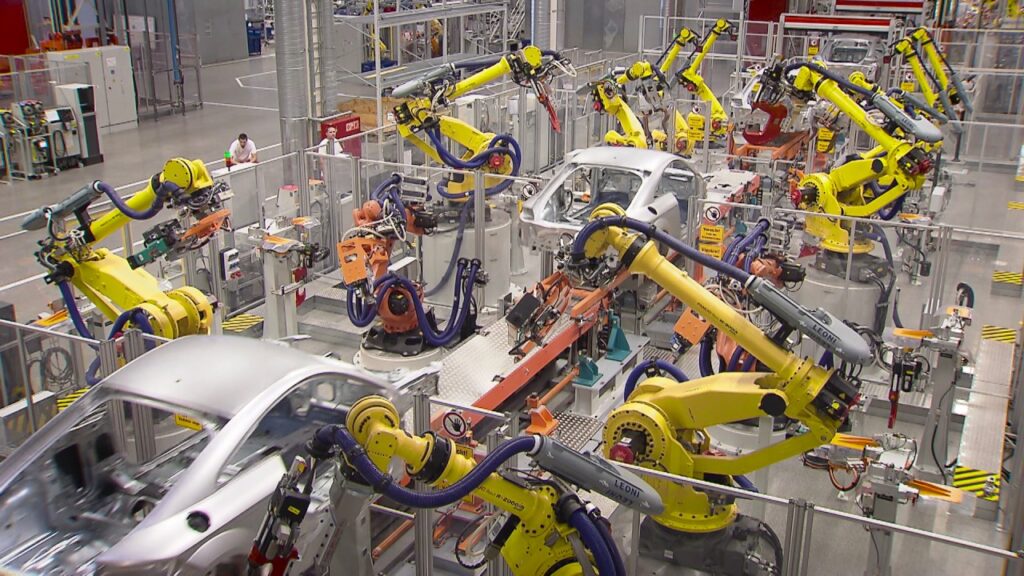Automate Your Material Transport Duties with Autonomous Mobile Robots
In today’s fast-paced industrial landscape, efficiency and productivity are of utmost importance. As technology continues to advance, companies are constantly looking for innovative solutions to streamline their operations. One such solution that has gained significant traction in recent years is the integration of autonomous mobile robots (AMRs) into material transport duties. These robotic helpers are revolutionizing the way materials are moved within a facility, offering improved safety, efficiency, and cost-effectiveness. In this article, we will explore the applications of industrial robots in the context of material transport and delve into how SEIT robots are paving the way for a more automated future.
Industrial Robots Applications
Industrial robots have found a multitude of applications across various sectors, ranging from manufacturing and logistics to healthcare and beyond. One particular area where these robots have proven to be extremely valuable is in material transport. Traditionally, material transport has relied on manual labor or the use of forklifts and conveyors. However, these methods often come with inherent limitations such as high costs, safety concerns, and limited flexibility. Enter AMRs – robots designed to autonomously move materials from one location to another.
AMRs in Action
SEIT robots, a leading provider of AMR technology, have successfully demonstrated the capabilities of these autonomous machines. By combining advanced sensors, robust AI algorithms, and cutting-edge software, SEIT robots are able to navigate complex environments, avoid obstacles, and transport materials efficiently. Whether it’s carrying pallets, bins, or crates, these robots can seamlessly navigate through narrow aisles, traverse uneven surfaces, and adapt to changing layouts. This level of flexibility and adaptability makes them ideal for a wide range of industries, including warehousing, manufacturing, and e-commerce.
Safety First
One of the standout features of AMRs is their ability to ensure safety in material transport operations. With built-in obstacle detection and collision avoidance systems, these robots can navigate crowded spaces without the need for human intervention. This not only reduces the risk of accidents and injuries but also allows human workers to focus on more complex tasks that require critical thinking and decision-making. Furthermore, the use of AMRs eliminates the need for humans to perform physically demanding tasks, minimizing the risk of long-term health issues associated with manual labor.
Efficiency and Cost Savings
By automating material transport, companies can significantly improve their operational efficiency and reduce costs. Unlike traditional methods, AMRs do not require infrastructure modifications or dedicated pathways, as they can navigate autonomously using onboard sensors and mapping capabilities. This allows businesses to quickly adapt to changing layouts and optimize their workflows without incurring additional expenses. Additionally, AMRs can operate 24/7, eliminating the downtime associated with shift changes, breaks, or fatigue. This uninterrupted flow of material transport results in increased throughput and faster order fulfillment, positively impacting customer satisfaction.
The Future is Autonomous
As technology continues to evolve at a rapid pace, the future of material transport undoubtedly lies in the hands of autonomous mobile robots. With advancements in AI, machine learning, and sensor technology, these robots are becoming more intelligent, efficient, and versatile. They can seamlessly integrate with existing infrastructure, collaborate with humans, and adapt to dynamic environments. Furthermore, the data collected by AMRs can be leveraged for process optimization, predictive maintenance, and continuous improvement. This data-driven approach allows companies to make informed decisions based on real-time insights, leading to increased productivity and competitiveness.
Conclusion
The rise of autonomous mobile robots in the realm of material transport marks a significant milestone in industrial automation. By embracing these innovative technologies, companies can unlock new levels of safety, efficiency, and cost savings. SEIT robots, with their advanced capabilities and user-friendly interface, are at the forefront of this robotic revolution. From warehouses to manufacturing facilities, these autonomous helpers are transforming the way materials are transported, reshaping industries, and setting the stage for a future where human workers can focus on higher-value tasks. It is clear that the applications of industrial robots, particularly in material transport, are only limited by our imagination.
Industrial Robot
“Unleashing the Potential of Autonomous Mobile Robots and Industrial Applications: Witness the Future in Action!”


